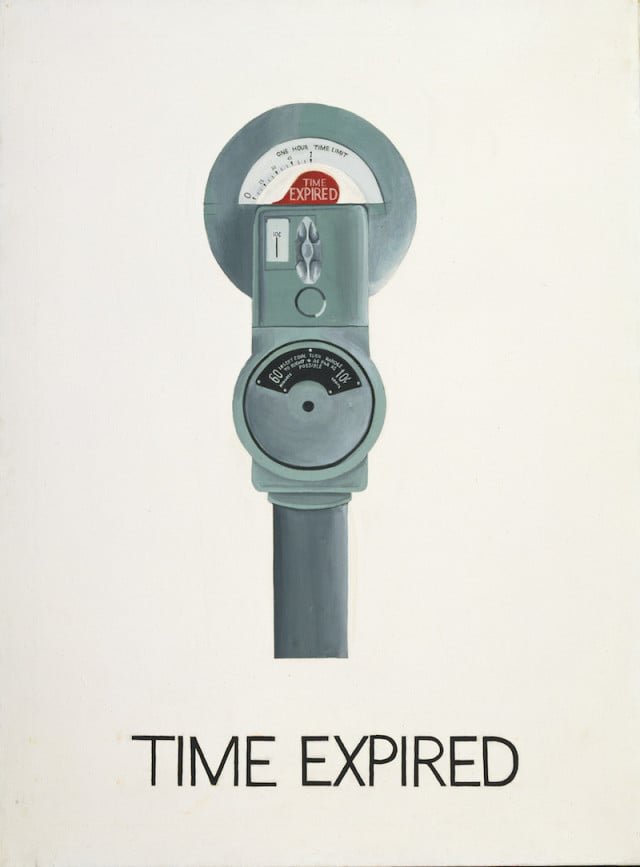Art & Exhibitions
‘Vern Blosum’ – the Pop Genius Who Never Existed
THE DAILY PIC: At MoMA, a hoax about Pop turns out to reveal its essence.

THE DAILY PIC: At MoMA, a hoax about Pop turns out to reveal its essence.

Blake Gopnik


THE DAILY PIC (#1550): The Museum of Modern Art in New York is now presenting a chunk of its collection as a survey of 1960s art and design, arranged so that each year in the decade gets its own piece of gallery real estate. The 1962 room includes this work called Time Expired by the American artist Vern Blosum – who in fact did not ever exist.
It turns out that “Blosum” was actually the pseudonym of an as-yet-unnamed abstractionist who was so pissed off by the budding success of Pop art that he decided to trick MoMA into acquiring one of his own insincere, off-the-cuff, hoax attempts at the style. That, he was sure, would “prove” the movement’s emptiness.
Of course it didn’t prove any such thing. All Blosum showed is that, malgré lui, he was able to make a pretty good Pop image – even one that hinted at the later conceptual paintings of figures such as John Baldessari. His satirical intentions in making the painting don’t matter to its success as Pop art.
Even Blosum’s trickery plugged into one of Pop’s central conceits that we’ve now mostly lost track of. In the early days of Pop – Blosum’s satire comes almost at its birth – every single work the movement turned out could be taken as a great big “put-on” (a favorite ‘60s word). Pop art started out being called “neo-Dada”, and a lot of its early foes, as well as its fans, were willing to imagine that it was all about provocation, more like Marcel Duchamp’s urinal Fountain than like the true, honest, heartfelt paintings of the Abstract Expressionists. You were supposed to wonder if Warhol was having you on when he presented a bunch of soup cans as art; for the art to matter as it once did, we need to keep wondering the same thing, even when it’s fetching Rembrandt prices. I’m sorry to tell “Vern Blosum” – apparently still out there making abstractions – that his piece helps us do just that.
When the great MoMA curator Alfred Barr suspected he’d been tricked by Blosum, he said, quite correctly, “Hoax or no hoax, I like the painting.”
For a full survey of past Daily Pics visit blakegopnik.com/archive.